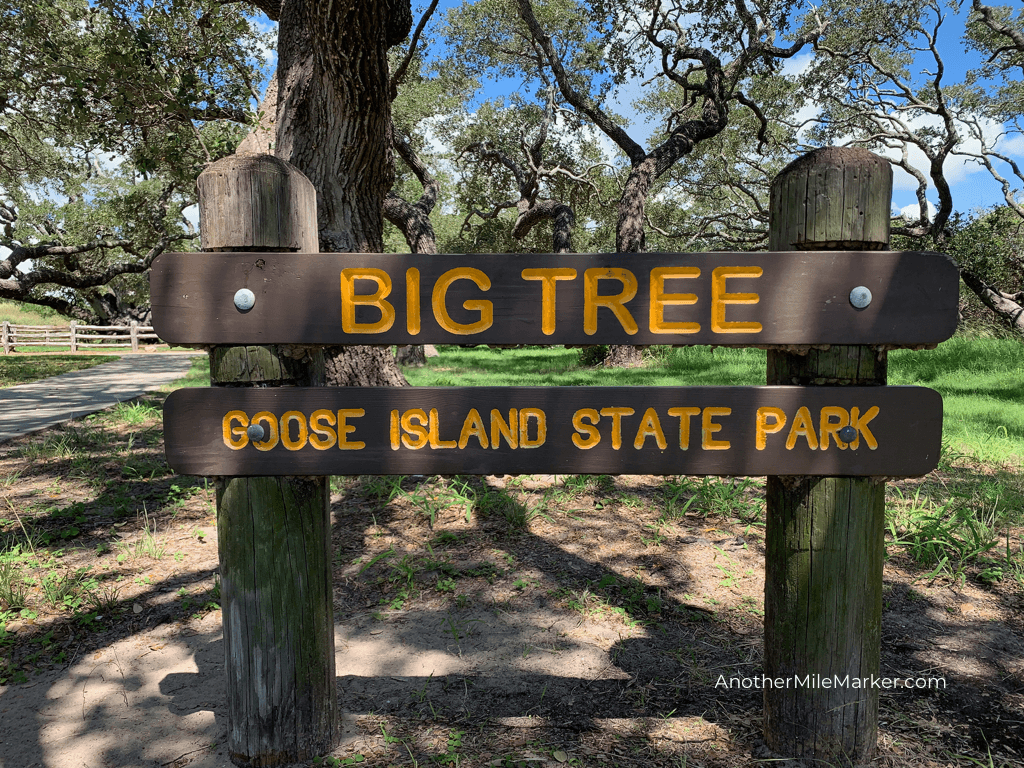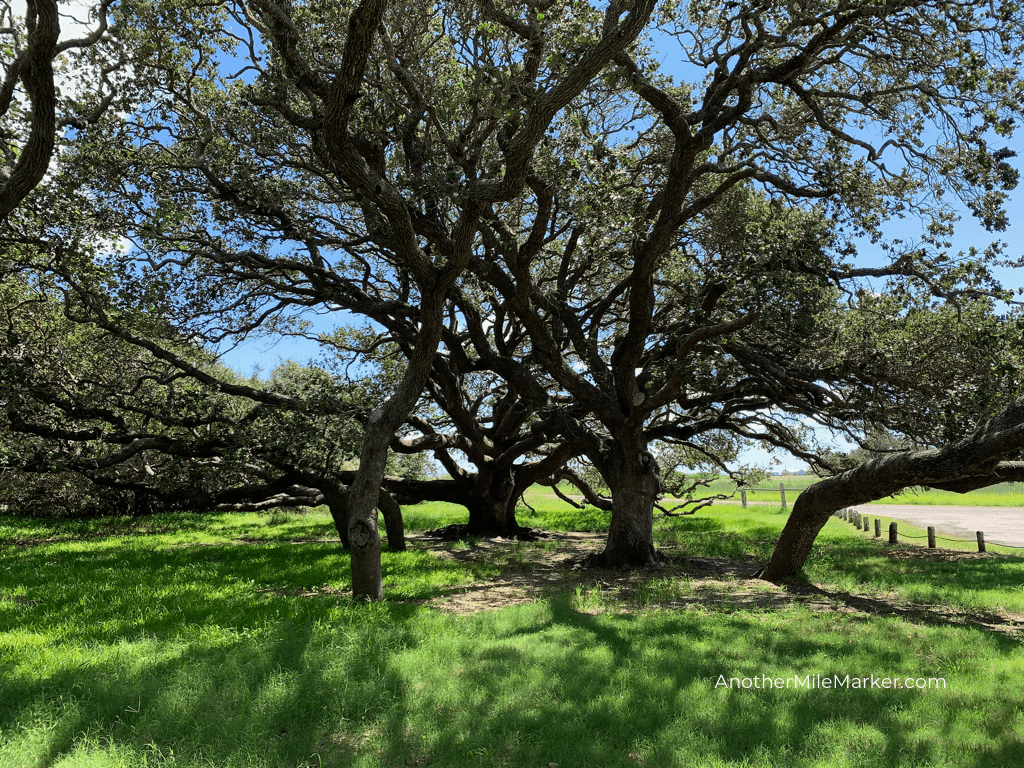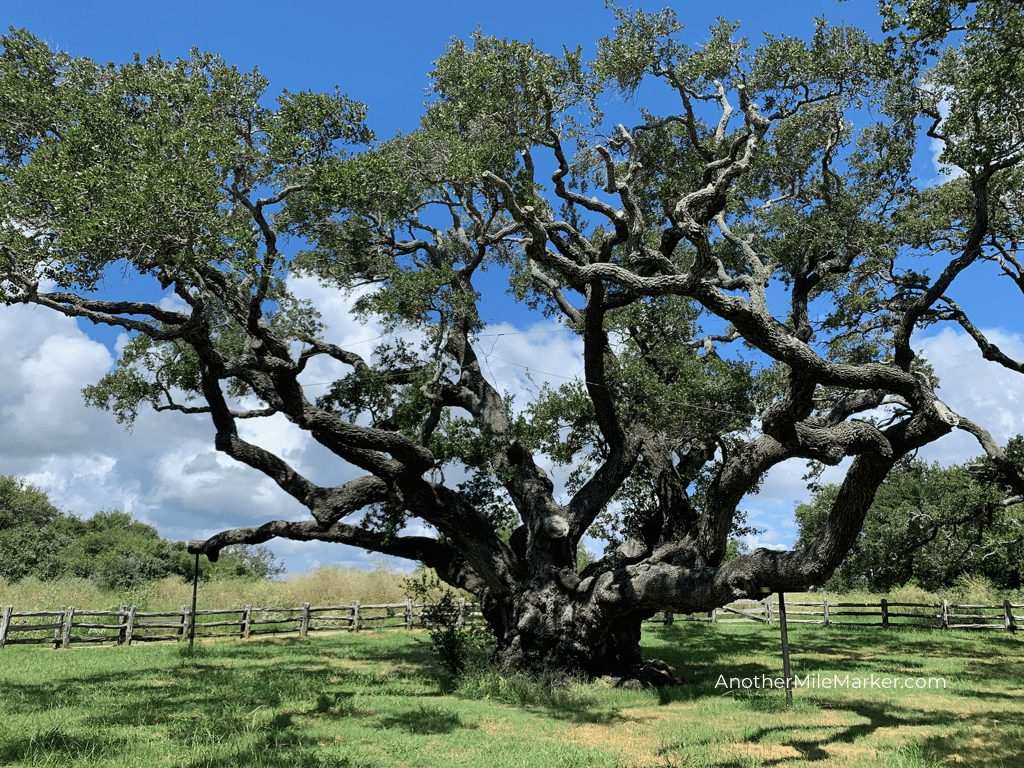The Big Tree at Goose Island State Park stands as a sentinel of the area. The ever-present winds of the Gulf of Mexico has twisted and gnarled its branches as it stands watch over this picturesque parcel of land. This longtime resident of the area has borne witness to parts of history that we can only imagine. The Big Tree is one of the most famous live oaks in the world.
A Tree of Several Names

The Big Tree, as it is now known, has carried several names over the years. It is located on the Lamar Peninsula and near the town of Lamar. It is believed that it was once known as the Lamar Oak because of being near the town.
The town of Lamar was destroyed by the Union Navy during the Civil War, but the Big Tree survived the assault. A Catholic Bishop’s home or chapel was one of the other survivors in the destroyed town of Lamar. This earned the Big Tree the moniker of the Bishop Oak.
One for the Ages

The Texas Forest Service estimates the age of the Big Tree between 1,000 and 2,000 years. It is possibly the oldest living (extant) live oak in the world. Climatologists believe the Big Tree has survived between forty and fifty major hurricanes. It survived, most recently, the ravaging winds of Hurricane Harvey, a category 4 storm, in August of 2017, mostly unharmed. Numerous floods, droughts, and wildfires failed to destroy this mammoth tree.
This gigantic specimen of living history has seen its share of history in action. It is believed to be the site where Karankawas Indians held councils and pagan ceremonies, a rendezvous spot for Comanche Indians, a hanging tree, and a meeting point for pirates. Earlier visitors are thought to include Spanish explorers as well.
Living Up to Its Name
The Big Tree is known scientifically as Quercus virginiana, or in layman terms a live oak. Earning the title of “Texas State Champion Virginia Live Oak” in 1969 made it one of the most famous live oaks in the world. It held this title until 2003. It is still believed to be one of the largest live oaks in the United States.
The Big Tree is a charter member of the Live Oak Society and ranks #16 on the list. Measurements include a circumference of 35 feet 1.75 inches (10.71 meters), a height of 45 feet (13.7 meters), and a crown spread of an impressive 89 feet (27.1 meters). The average diameter of the trunk is a whopping 11 feet 2.25 inches (3.41 meters).
Characteristics for determining a “record” or “champion” tree are the cumulative measure of the girth, the spread, and the height. While the ongoing winds from the Gulf hinder it from growing to maximum height, the massive girth of the Big Tree offsets this shortfall and makes it the second-largest live oak in Texas.

Is the Big Tree worth a visit?
The Big Tree is beginning to show its age, but the majesty that once graced its boughs is evidenced by the less celebrated neighbors surrounding it. These younger trees personify the essence of what the Big Tree embodied at its peak of maturity.
You might enjoy some additional treats while visiting the Big Tree as well. We witnessed several deer walking just across the street from the parking area while we were there. The hummingbirds were on their migration south and were hither and thither through the trees when we visited. A little further down the road is a ride along the coastline showcasing the beauty of the shoreline and you can observe many varieties of birds as well. We saw pelicans, ducks, blue herons, and egrets just to name a few.
A visit to the Big Tree at Goose Island State Park is well worth it when in the Rockport area. A trip to Rockport Beach is also a fun day in the area. Have you visited the Big Tree? What did you think? Let us know in the comments below.

